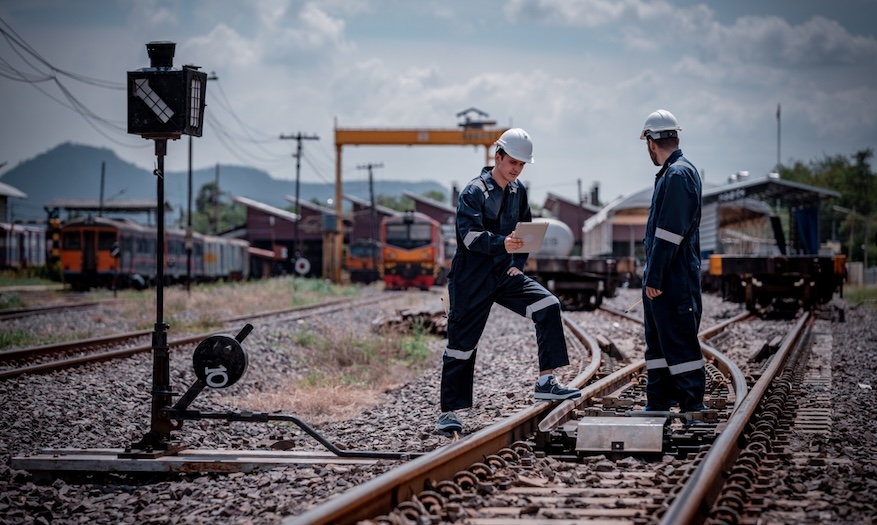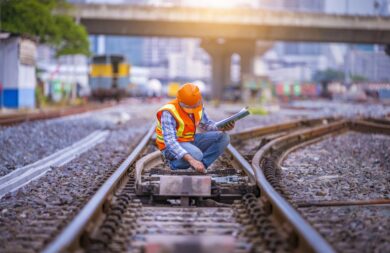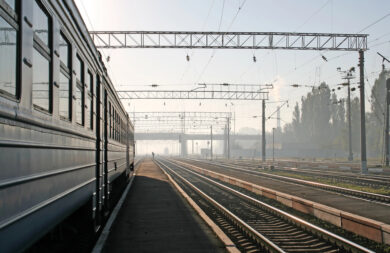Book a Consultation
Classifications and Credentials:
Maximizing Track Lifespan: Essential Tips for Railroad Maintenance

Railroad tracks endure constant stress from heavy loads, environmental conditions, and daily use, which makes maintenance a vital part of extending their lifespan and keeping rail systems safe and efficient. At Track Tech, we understand that proactive, consistent maintenance is key to minimizing disruptions, reducing costs, and maximizing the durability of rail infrastructure. In this post, we’ll explore essential tips for railroad maintenance that can help operators make the most of their track investments.
The Importance of Regular Maintenance
Well-maintained tracks lead to safer operations, fewer unexpected breakdowns, and lower costs in the long term. Regular maintenance helps identify minor issues before they escalate, allowing for targeted repairs and avoiding large-scale replacements or track shutdowns. Here are some maintenance strategies that can significantly extend track lifespan:
1. Routine Track Inspections
Inspections are the first line of defense in track maintenance. By conducting regular inspections, railroad operators can detect problems like track misalignment, rail wear, tie degradation, and ballast displacement early on.
- Frequency: Monthly visual inspections and annual comprehensive checks are recommended for effective monitoring.
- Tools: Track Tech utilizes advanced technologies, including ultrasonic rail testing and geometry measurement, to provide precise, thorough inspections.
- Outcome: Early detection of issues ensures timely repairs and prevents severe structural damage, reducing the need for costly overhauls.
2. Proactive Tie Renewal and Replacement
Ties provide the foundation and stability for railroad tracks. Over time, wood and concrete ties degrade due to moisture, temperature fluctuations, and pressure from rail traffic. Replacing old or damaged ties is crucial for maintaining track alignment and safety.
- Renewal Schedule: Wooden ties typically need replacement every 20-30 years, while concrete ties last longer but should still be inspected regularly.
- Preventive Replacement: Consider replacing ties in critical areas before they reach the end of their lifespan to maintain continuous support for the rails.
3. Ballast Management
Ballast, the crushed rock layer beneath the tracks, provides drainage and distributes the load from passing trains. Over time, ballast can become compacted, lose drainage ability, or be contaminated by soil and vegetation, which weakens the track structure.
- Cleaning and Replenishing: Periodically cleaning and replenishing ballast helps maintain drainage and prevents track movement.
- Resurfacing: Regular ballast tamping (resurfacing) ensures that the ballast remains packed tightly, offering stable support for the rails.
4. Rail Grinding for Smooth Operations
Rail grinding involves smoothing the surface of the rails to remove imperfections, reduce wear, and extend the life of the track. This process reduces the chances of rail fatigue, improves train performance, and helps prevent track-related accidents.
- Frequency: Rail grinding should be performed based on rail usage and traffic load but is generally recommended annually for high-traffic areas.
- Benefits: Grinding reduces wear and tear on the rails and wheels, leading to quieter and smoother rides.
5. Drainage Control
Water buildup around railroad tracks can cause severe damage, leading to erosion, weakened ballast, and track instability. Effective drainage systems prevent water from pooling and direct it away from the track structure.
- Regular Drainage Checks: Inspect drainage channels and culverts regularly to ensure they’re free of debris and functioning correctly.
- Upgrades as Needed: Installing or upgrading drainage systems in vulnerable areas, such as low-lying or flood-prone zones, prevents future damage and maintenance costs.
6. Track Geometry Maintenance
Track geometry refers to the correct alignment, elevation, and spacing of the rails. Even slight misalignments can lead to safety hazards, increased wear, and a shorter track lifespan.
- Regular Geometry Checks: Using track geometry measurement tools, Track Tech inspects tracks for alignment, gauge, and elevation issues.
- Immediate Adjustments: Correcting track geometry issues promptly ensures safe train passage and reduces the risk of derailment.
7. Vegetation Control
Vegetation around railroad tracks can disrupt operations, block visibility, and contribute to ballast contamination. Regular vegetation control helps maintain clear sightlines for operators and reduces the risk of fire hazards.
- Clearing Schedules: Vegetation control should be performed seasonally, especially in areas with rapid plant growth.
- Best Practices: Use eco-friendly herbicides and manual clearing methods to keep tracks clear while preserving nearby ecosystems.
How Track Tech Can Help Extend Track Lifespan
Track Tech offers comprehensive maintenance solutions designed to protect and extend the life of railroad tracks. Our proactive approach includes:
- Detailed Inspections: Utilizing advanced technology to identify issues with precision.
- Customized Maintenance Plans: Tailoring maintenance schedules and services to meet each client’s unique requirements and track usage patterns.
- Expert Repairs: Providing timely, high-quality repairs and upgrades to keep tracks in optimal condition.
Conclusion
Preventative maintenance is the key to a long-lasting, safe, and cost-effective railroad infrastructure. By implementing regular inspections, proactive tie replacements, ballast management, and other essential maintenance practices, railroad operators can maximize the lifespan of their tracks and ensure reliable operations. Track Tech is dedicated to helping clients extend the life of their tracks through expert maintenance services and innovative solutions.
Ready to boost your track’s durability? Contact Track Tech today to learn how our customized maintenance solutions can keep your railroad running smoothly and efficiently.









